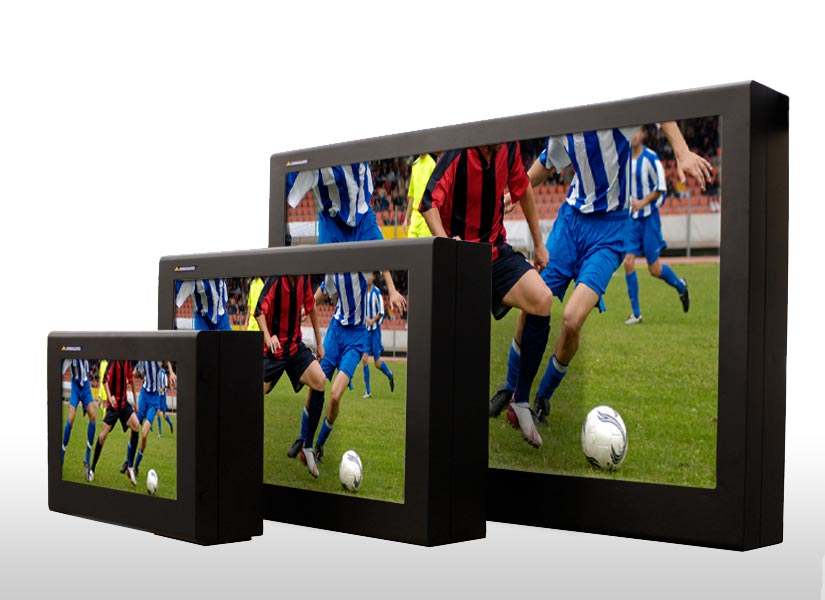Types of Screen to use in an Outdoor TV Enclosure
Posted by: Richard Williams | Posted on: | 0 Comments
An Outdoor TV enclosure can be used for a variety of tasks: outdoor digital signage, information screens in railway stations, and even outdoor TVs for gardens, bars and pubs. They have advantages over other forms of outdoor TV use in that they can house almost any type of LCD or plasma screen.
Choosing a plasma or an LCD screen to operate outdoors can be difficult. Of course, with the LCD enclosure protecting the device from the weather, temperature and impact—any old TV can be taken outside, but can it?
Challenges, other than the weather, exist in outdoor locations and the choice of television type can make all the difference to the success or failure of your Outdoor TV Enclosure installation.
Brightness, for instance, is an important factor to consider. One of the biggest challenges for an outdoor screen is coping with sunlight. Sunlight can cause several problems for an outdoor screen. Firstly, bright sunlight can cause glare if the sun is allowed to shine onto the reflective surface of the screen. This can be dealt with by angling the screen away from the sun or placing a shroud over the screen; however, the sun also has another effect on an outdoor screen.
The sun’s intensity can diminish the brightness levels of most consumer or commercial grade screens making it washed out and hard to view. The stronger the sun, the weaker the picture, so countering this problem is essential for a screen to be useful outside.
The brightness level of the screen is key to ensuring a screen can be read outdoors and different types of screen have different brightness levels. Typically, plasma screens have higher contrast levels than LCD and they do not require a back-light and often plasmas are used outdoors because of this readability advantage; however, recently, due the rise of outdoor digital signage, high brightness TVs have been developed in both plasma and LCD that are usually two-three times brighter than standard devices.
Commonly, these high brightness LCDs are backlit using LEDs which use less power and heat which makes them less likely to fail when operating continually.
Post shortlink:
Popular Products
LCD Enclosure
Need armor for your LCD/LED screen(s)? Outdoors or inside the versatile LCD enclosure protects against thieves, vandals & the weather. Installation idea: NFL stadiums.
Outdoor Digital Signage
Exclusive 46” outdoor screen protection. Dubbed the ‘Totem’, due to its distinct design, it repels damage threats, but attracts audiences. Installation idea: Drive-thru restaurants.
Portrait Flat Panel Enclosure
Safeguard your eye-level advertising display screen(s), indoors or outdoors. Completely customizable, add exciting features like touch screen technology. Installation idea: Restaurant frontages.
Indoor Digital Signage
Popular purchase for retail outlets! Great for ‘point of sale’ persuasion, boost your brand with static & motion advertising from a single unit! Installation idea: Mall of America.





